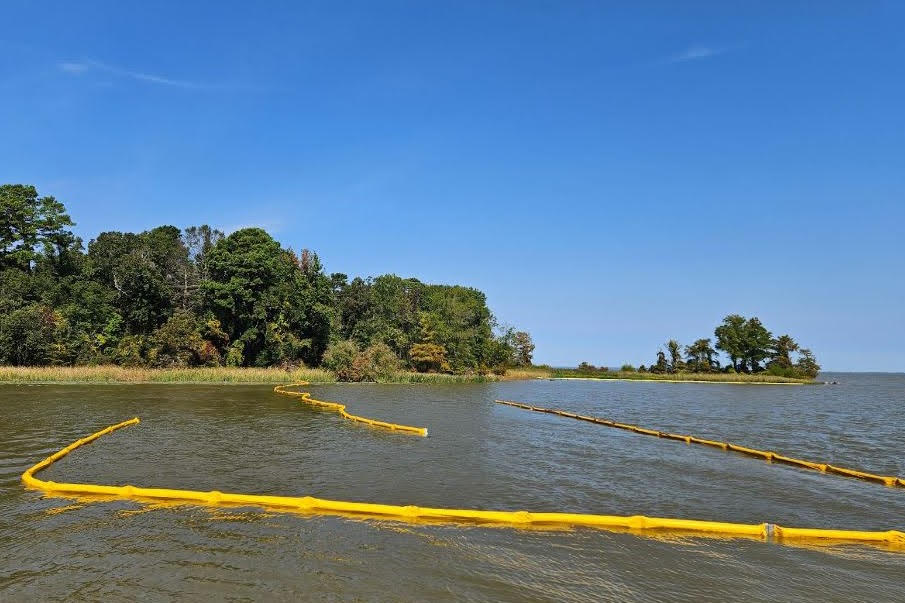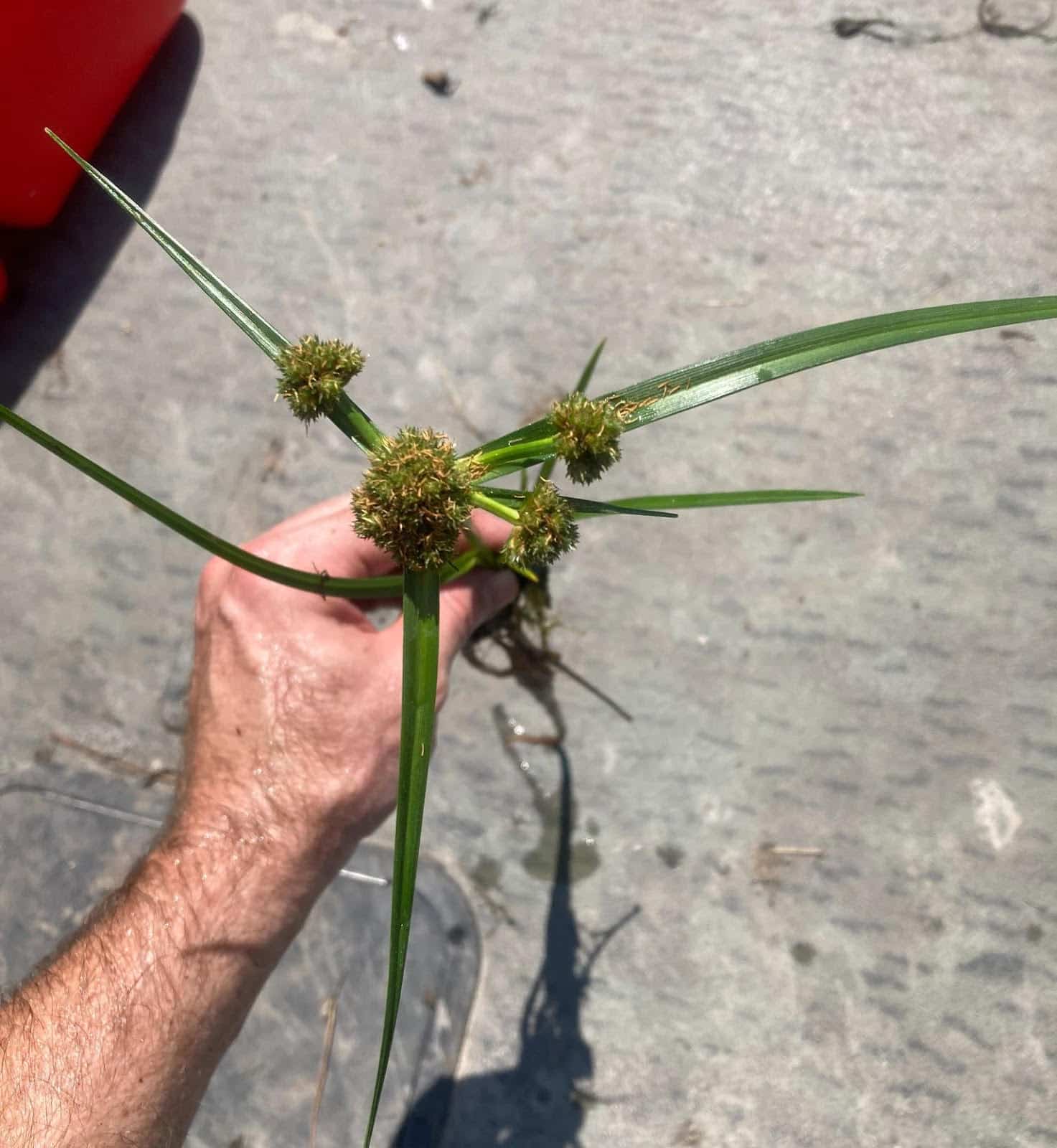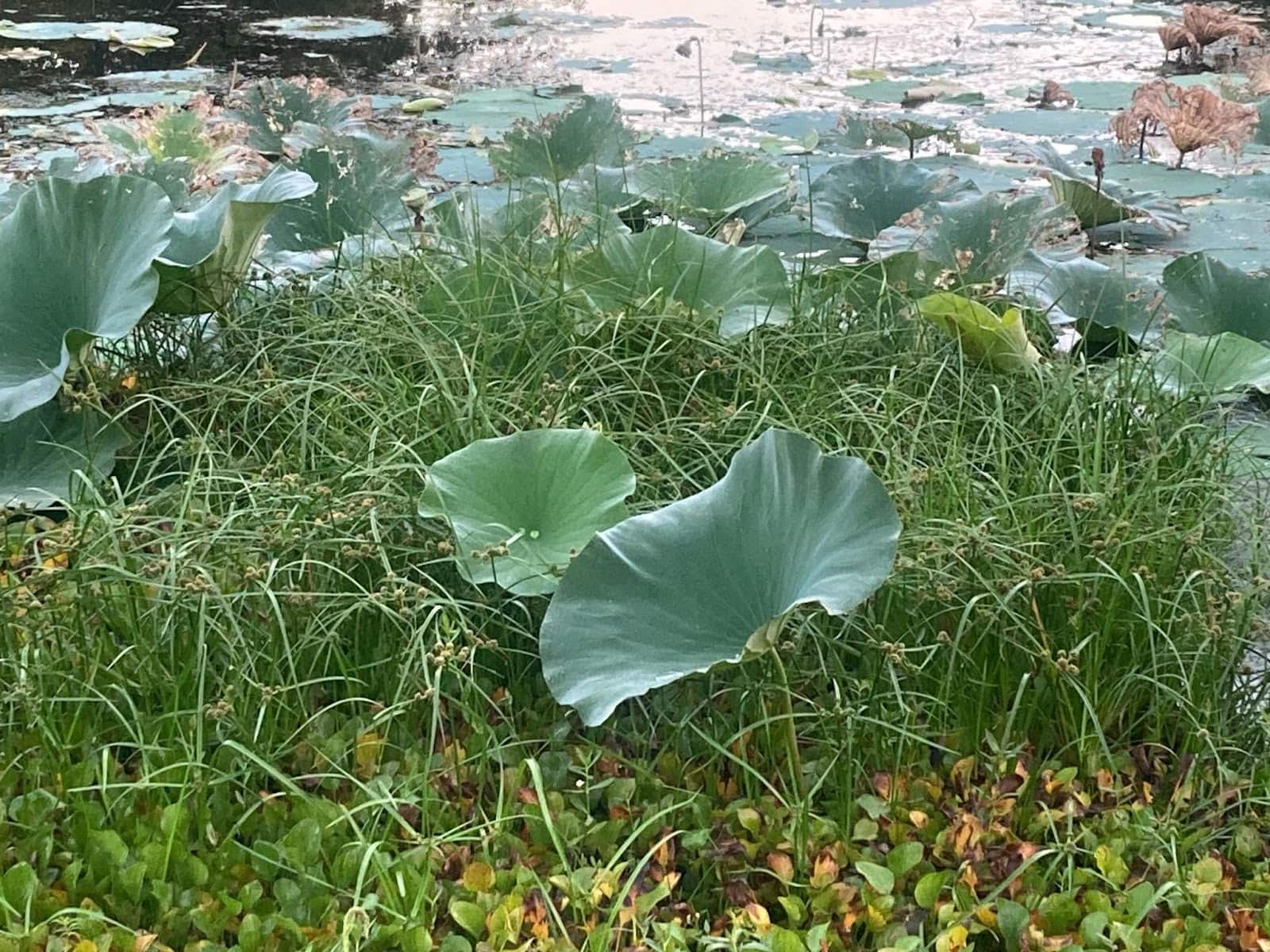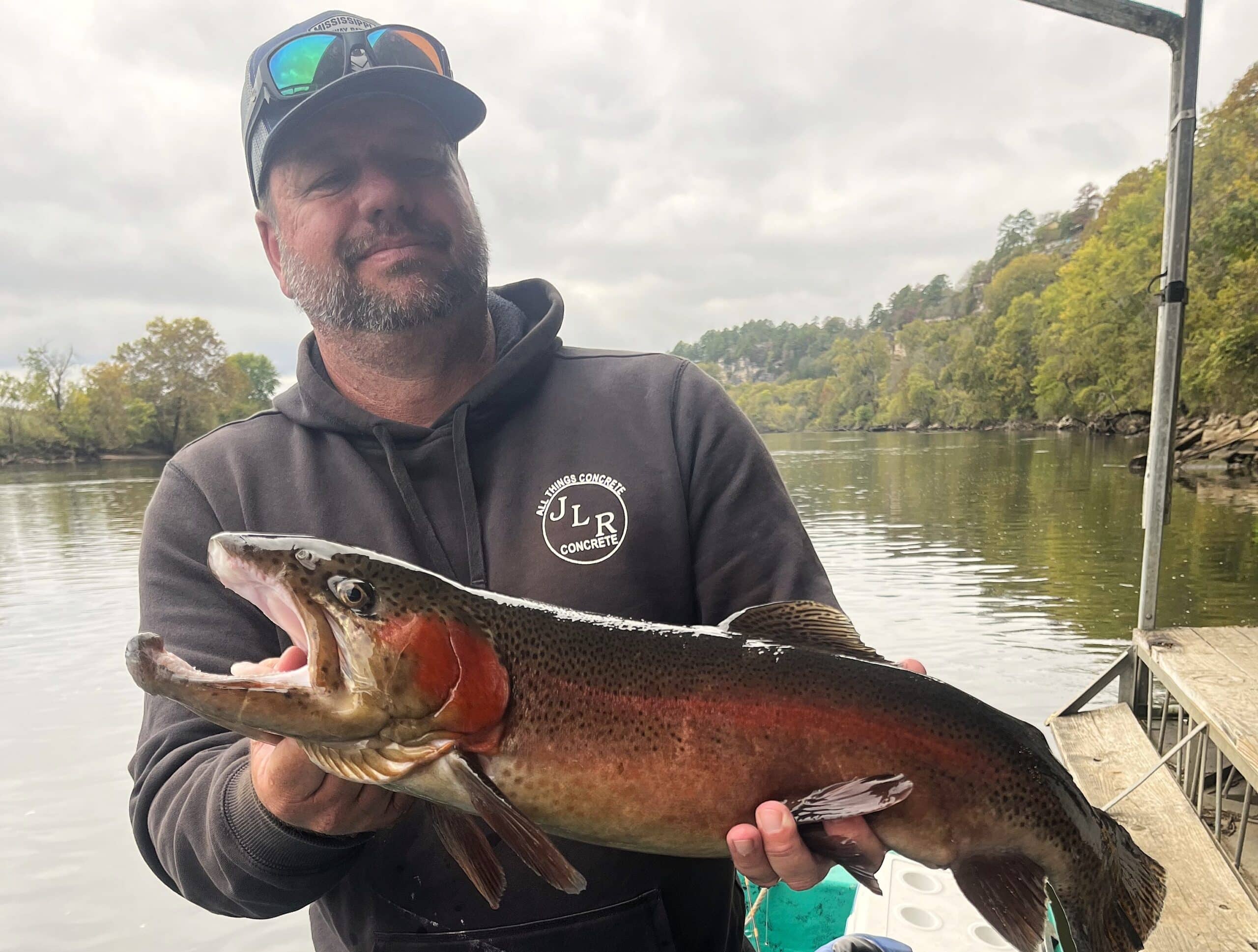State park access reopens at Millwood as AGFC knocks back invasive plant
BY Jim Harris
ON 10-23-2024

HOPE — Boat traffic has resumed in areas of Millwood Lake that were affected by the discovery of Cuban bulrush, an aquatic invasive plant, according to the Arkansas Game and Fish Commission’s southwest region fisheries office.
Dylan Hann, AGFC district fisheries supervisor in Perrytown, said a containment boom to restrict the movement of floating pieces of Cuban bulrush near the Millwood State Park access, were modified so boaters can drive through it and reach spots to fish. It’s like a floating oil containment boom used with spills, and this one has been shaped to let boaters navigate through it while preventing the plant from spreading outside of the cove. “It’s similar to the containment that we have at boat ramps on Lake Columbia to prevent another invasive floating plant, giant salvinia, from congregating at the boat ramp and spreading to new waters” he said.
A contractor has sprayed the areas with Cuban bulrush twice this month, Hann said. This has helped knock the plant back, Hann added.
The plant “does produce seeds, so it’s likely going to produce new plants from the seed bank next spring. We’re going to work closely with the Millwood Corps of Engineers staff to make sure we stay on top of it. If we can knock it back next year before it produces seeds, we can get ahead of it,” he said.

Cuban bulrush looks like other aquatic grasses and sedges for much of the year, then around July to August it produces very noticeable seed heads that make it stand out as something clearly different from other lake vegetation. Millwood Lake also has mats of alligatorweed that the AGFC is treating through contractor spraying, and Cuban bulrush has been found growing on top of the alligatorweed, Hann noted. Cuban bulrush is a floating plant and is commonly found growing on top of other floating or emergent aquatic vegetation. It can quickly choke out shallow areas, creating dense floating mats that can block boating and fishing access and displace native native plants that are beneficial to native fish and wildlife, he added.
Cuban bulrush was likely transported to Millwood Lake from another waterbody unknowingly, by plant fragments or seeds hitching a ride on boats or trailers, which is how most invasive aquatic plants are spread to new waters.

The boating and angling public can help with stopping the spread of this and other aquatic invasive species by practicing: “Clean, Drain and Dry.” The public is urged to clean their boat, trailer and equipment after each use, completely drain all water from the boat and all compartments, and dry thoroughly. Also, the public is urged to keep an eye out for any suspicious plants (native or not) and report them to your local fisheries biologists. Be sure to note the location of the sighting and take a photo that includes the roots, leaves and flowers.
If you suspect you’ve come across an invasive aquatic plant, please report it online at www.agfc.com/ans. Reports are used to help AGFC rapidly respond to contain and eradicate, if possible, new invasive species introductions before they can spread and establish.
The discovery of Cuban bulrush in Millwood was made only when an AGFC biologist doing bass sampling recently noticed the unusual pods in the aquatic vegetation.
“There are areas of the lake in expansive backwater sloughs that have Cuban bulrush with no way to effectively contain them with containment booms,” Hann said. “One advantage we had with the state park is it’s an isolated place where there isn’t any Cuban bulrush immediately outside that boom along the dam or along the northwest bank leaving the state park, so we were just trying to keep that area contained,” Hann said. “The booms are there to help catch floating vegetation. We want it to be contained there and not drift to other parts in the lake. We put out 800 feet of containment boom at the state park.”
####
CUTLINES:
BOOM MAZE
A series of floating booms was placed around the Millwood Lake State Park boat access during a recent eradication effort to help prevent Cuban bulrush from spreading by wind and wave action. AGFC photo.
OVERHEAD SHOT OF BULRUSH
Bulrush found and removed in Millwood Lake had an opportunity to spread seeds before it was eradicated, so AGFC will work with the Army Corps of Engineers to watch for and spray any additional plants that sprout in the next year. AGFC photo.
BULRUSH IN PADS
Cuban bulrush can grow on floating plants and develop mats too thick for fish to live if left to grow uncontrolled. AGFC photo.
Recent News

Arkansas Wildlife Weekly Fishing Report
Oct. 30, 2025
Subscribe to Our Weekly Newsletter E-mails
Don’t miss another issue. Sign up now to receive the AGFC Wildlife Weekly Newsletter in your mailbox every Wednesday afternoon (Waterfowl Reports are published weekly during waterfowl season and periodically outside the season). Fishing Reports arrive on Thursdays. Fill in the following fields and hit submit. Thanks, and welcome!

